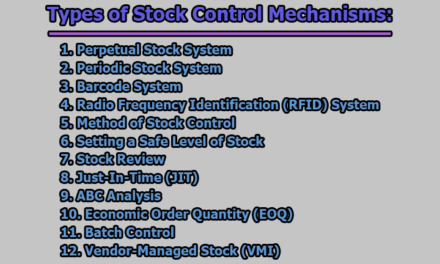Total Quality Management (TQM) Practices in Construction Industry:
The construction industry plays a pivotal role in the economic development of any nation, providing employment opportunities and reducing poverty. Despite being the largest unorganized sector, it significantly contributes to economic growth, infrastructure development, and job creation. As the demand for construction activities increases globally, the importance of maintaining high-quality standards becomes imperative. In this article, we will explore the significance of Total Quality Management (TQM) practices in construction industry.
Section 1: Economic Importance of Construction Industry:
1.1 Job Creation and Economic Growth: The construction industry serves as a significant contributor to a nation’s economy by generating employment opportunities for a diverse workforce. With the demand for both residential and non-residential construction projects on the rise, the industry becomes a driving force behind economic development (Thai, 1980). In India alone, the construction sector employs over 33 million people, constituting 21% of the working population and contributing more than 7% to the country’s GDP (Williamson, Steve).
1.2 Supply Chain Stimulus: The construction industry’s economic impact extends beyond direct employment, influencing various ancillary sectors. Construction activities create demand for materials such as wood, sand, cement, and electric goods, stimulating production in related industries (Thai, 1980). This symbiotic relationship fosters economic growth and supports the development of infrastructure, making the construction industry a vital economic player.
1.3 Key Role in Gross Capital Formation: Construction activities require substantial investment, aligning with Keynesian theory, which posits that increased investment leads to elevated employment, output, and income levels (Dang, 2010). The construction industry’s total capital expenditure in India has witnessed significant growth over the years, from Rs. 143 billion in 1999-2000 to a staggering Rs. 9027 billion, now (Williamson, Steve).
1.4 Sustainable Growth and Development: Acknowledging the construction industry’s role in fostering sustainable growth, it becomes evident that construction contributes to the local, regional, and national economy. By generating employment opportunities across skill levels, the sector promotes overall economic development and necessitates inputs from other industries and factors of production (Wibowo, Agung, 2014).
Section 2: Nature of Construction Industry:
2.1 Labor-Intensive and Unorganized: The construction industry stands out as highly labor-intensive, engaging skilled, semi-skilled, and unskilled workers in various capacities. Despite its critical economic role, it remains the largest unorganized sector, contributing to challenges such as irregular employment, lack of job security, and unhygienic working conditions (Wibowo, Agung, 2014).
2.2 Temporary Employment and Mobility: The nature of employment in the construction industry is characterized by its casual and temporary nature. Upon completion of a project, workers often move from one work site to another, changing employers and locations. This mobility further reinforces the transitory and informal nature of employment within the construction sector (Meena, 1978).
2.3 Contracting and Subcontracting Systems: Within the construction sector, contracting, sub-contracting, and piece-rated systems are prevalent. This structure allows flexibility for both employers and workers but can lead to challenges such as wage variations and reduced job security. Migrants, attracted by low wages and minimal legal obligations, often form a significant portion of the workforce in this industry (Meena, 1978).
2.4 Social Welfare Challenges: The challenges faced by construction workers go beyond employment conditions. Women workers are frequently denied maternity benefits, and the living conditions for many workers consist of tinned or thatched huts without proper facilities. The lack of job security and social welfare schemes further compounds the socio-economic difficulties faced by those engaged in construction activities (Manohar, Murali, 1981).
2.5 Health and Safety Concerns: Modern construction technologies, while enhancing efficiency, expose workers to various health risks. Construction workers commonly experience occupational diseases, and the absence of adequate health and safety measures contributes to a range of health problems. Additionally, accidents and injuries in the workplace further compromise the well-being of construction workers (Dang, 2010).
Section 3: Total Quality Management (TQM) in Construction:
3.1 Balancing Cost, Time, and Quality: Construction projects inherently involve a delicate balance between cost, time, and quality. In the pursuit of meeting deadlines and budget constraints, there is a risk of compromising the quality of construction. Total Quality Management (TQM) practices aim to address this challenge by providing a systematic approach to ensure that projects adhere to established quality standards (Shook, S. R., 1997).
3.2 Quality Assurance System: Establishing a robust quality assurance system is paramount in the construction industry. TQM emphasizes the creation and implementation of quality assurance programs that cover all aspects of the construction process. This includes stringent quality control measures, adherence to industry standards, and continuous improvement to enhance overall construction quality (Shook, S. R., 1997).
3.3 Customer Confidence: The construction industry’s reputation is closely tied to the quality of its work. TQM practices contribute to building customer confidence by ensuring that construction projects are executed according to the developed quality assurance programs. This not only safeguards the interests of the clients but also promotes the overall credibility and reliability of the construction industry (Shook, S. R., 1997).
3.4 Preventing Negligence in Smaller Projects: Smaller construction projects often face the risk of neglect or lack of attention to quality standards due to their scale. TQM practices become particularly crucial in these scenarios, preventing the compromise of construction quality and ensuring that even smaller projects contribute to the industry’s overall reputation for excellence (Shook, S. R., 1997).
3.5 Continuous Improvement: TQM is not a one-time implementation but a philosophy that encourages continuous improvement. Construction projects are dynamic, and TQM practices advocate for ongoing assessments and refinements to processes. This iterative approach ensures that the construction industry remains adaptable, responsive, and consistently delivers high-quality outcomes (Shook, S. R., 1997).
Section 4: Socio-Economic Problems of Workers in the Construction Industry:
4.1 Economic Disparities and Social Backwardness: Construction workers often find themselves in socially and economically disadvantaged positions. The majority of these workers face challenges such as low wages, lack of bargaining power, and exploitation through irregular employment or overwork. These economic disparities contribute to the social backwardness of construction workers, hindering their overall well-being and quality of life (Manohar, Murali, 1981).
4.2 Poor Living Conditions: The living conditions of construction workers are often substandard, residing in tinned or thatched huts without proper amenities. The lack of a separate room for cooking and inadequate housing conditions further amplify the socio-economic challenges faced by these workers. Improving living conditions is integral to addressing the holistic well-being of the construction workforce (Manohar, Murali, 1981).
4.3 Migrant Workers and Job Insecurity: The transient nature of construction employment leads to frequent migration as workers move from one place to another or shift between contractors. This creates job insecurity and prevents workers from establishing roots in a particular location. Additionally, the lack of job security and social welfare schemes exacerbates the challenges faced by these migrant construction workers (Meena, 1978).
4.4 Discrimination Against Women Workers: Women workers in the construction industry often face discrimination, particularly in terms of wages and benefits. Denial of maternity benefits further compounds gender-based disparities. Addressing these inequalities is crucial not only for the well-being of women workers but also for promoting a more inclusive and equitable construction sector (Manohar, Murali, 1981).
4.5 Health and Substance Abuse Issues: Construction workers are exposed to occupational hazards, leading to various health problems. In addition to physical health issues, many workers develop unhealthy coping mechanisms such as alcohol consumption, smoking, and substance abuse. These habits not only affect the well-being of the workers but also impact their efficiency in construction activities (Dang, 2010).
Section 5: Economic Impact of the Construction Industry on Workers:
5.1 Labor-Intensive Employment: The construction industry stands out as a labor-intensive sector, absorbing a wide range of skilled, semi-skilled, and unskilled laborers. This inclusive employment approach contributes significantly to eradicating unemployment and poverty, offering opportunities for individuals with varying skill levels to contribute to the industry (Shenbagaraj. P, 2018).
5.2 Increased Employment Opportunities and National Income: The growth of the construction industry directly correlates with increased employment opportunities and heightened national income. By engaging both public and private investments, the industry indirectly raises employment, output, and income levels in a country. This economic ripple effect further bolsters the overall economic development (Shenbagaraj. P, 2018).
5.3 Boost in Public and Private Investment: Construction activities serve as catalysts for increased public and private investment. This, in turn, creates a positive cycle, indirectly stimulating employment, output, and income growth. The construction sector’s demand for goods and services also fosters the development of other industries, further contributing to economic expansion (Shenbagaraj. P, 2018).
5.4 Improved Standard of Living: Construction workers, dependent on the industry for employment, witness an improvement in their standard of living. The consumption of goods and services increases as a direct result of construction-related income, positively impacting the well-being of workers and their families. This improvement underscores the industry’s economic impact at the individual level (Shenbagaraj. P, 2018).
5.5 Basic Development of Areas: Building construction not only generates economic activities but also contributes to the basic development of areas. Infrastructural facilities such as roads, markets, electricity, and communication networks are developed as a result of construction projects. This comprehensive development enhances the socio-economic landscape, creating a foundation for overall progress in social, cultural, industrial, and economic factors (Shenbagaraj. P, 2018).
Section 6: Societal and Cultural Impacts of Construction Industry:
6.1 Area Development and Urbanization: Building construction plays a pivotal role in the development and transformation of areas. Through the creation of residential and commercial spaces, construction projects contribute to the expansion and urbanization of regions. This not only meets the growing demand for housing and infrastructure but also fosters economic activities in urbanized areas (Rai, A. and Sankar, A., 2021).
6.2 Enhanced Mobility and Migration: The construction industry serves as a catalyst for the mobility of people from rural to urban areas. As construction projects create employment opportunities and develop urban centers, individuals are drawn to these areas in search of work and better living conditions. This migration, driven by construction activities, influences societal dynamics and cultural exchanges (Rai, A. and Sankar, A., 2021).
6.3 Development of Infrastructural Facilities: Beyond the construction of buildings, the industry contributes to the overall development of infrastructural facilities. Roads, markets, electricity, and communication networks are essential byproducts of construction projects. These facilities not only support the construction industry itself but also enhance the overall quality of life for communities (Rai, A. and Sankar, A., 2021).
6.4 Promotion of Economic Activities: Construction activities generate demand for various goods and services, leading to the development of related industries. Sectors such as brick kilns, cement production, stone quarrying, paints, and steel production thrive as a result of construction projects. This symbiotic relationship contributes to the economic growth and diversification of the larger community (Rai, A. and Sankar, A., 2021).
6.5 Educational and Social Opportunities: The construction industry provides educational and social opportunities, allowing individuals to understand the logic and principles of life through hands-on experiences. By engaging in construction activities, workers gain practical skills and knowledge, contributing to their personal development. This, in turn, supports societal growth and cultural enrichment (Rai, A. and Sankar, A., 2021).
In conclusion, the construction industry emerges as a dynamic force with far-reaching impacts on economic, societal, and cultural dimensions. While the industry serves as a cornerstone of economic development, providing employment opportunities and generating income, it also presents a myriad of socio-economic challenges for its workforce. The implementation of Total Quality Management (TQM) practices becomes imperative in maintaining a delicate equilibrium between cost, time, and quality in construction projects. Addressing the challenges faced by construction workers, from economic disparities to health and safety concerns, is crucial for creating a more equitable and sustainable industry. Moreover, the construction sector’s contributions extend beyond economic metrics, shaping urban landscapes, fostering mobility, and influencing cultural dynamics. Recognizing and overcoming the industry’s challenges, coupled with a commitment to TQM, can pave the way for a construction sector that not only builds structures but also nurtures a resilient and socially responsible community.
References:
- Dang and Giang T.H. (2010). Perspectives of Construction Industry in Thailand.
- Lawson, Russel (2013). Social backwardness of Construction Workers, Woodland Publishers, New Delhi.
- Manohar, Murali (1981). Women Construction Workers of Warangal, Economic and Political Weekly, Vol.14, PP. 97-99.
- Meena, N.L. (1978). Problems of Construction Workers, Industrial Economy, Vol.3, PP. 17.
- Nair, B., & Marishkumar, P. (2023). Total Quality Management Practices in Construction Industry with Special Reference to Kerala. Vinayaka Missions Research Foundation, Salem. Retrieved from http://hdl.handle.net/10603/537754
- Robbins, (1935). Socio-economic Conditions of Construction Workers in Developed Countries, Allied Publishers, New Delhi.
- Rai, Anu and Sankar, Ashis (Prof). (2021). ‘Workplace Culture & Status of Women Construction Labourers: A case study in Kolkata, West Bengal, ‘Indian Journal of Spatial Science, Vol-3, IJSS, pp44
- P (2018). An Economic Analysis of Women Construction Workers In Thoothukudi District, Economics Ph.D Thesis, ManonmaniamSundaranar University Tirunelveli – 627 012 June – 2018.
- Shook, S. R. (1997). Innovation and the United States residential construction industry: An integrated model of determinants of firm innovativeness for engineered wood products. University of Washington. ProQuest Dissertations Publishing, 9819302. Retrieved from https://www.proquest.com/openview/a1385480a77cf0323ee8523456b00621/
- Thai (1980). Development of Construction Industry, Journal of Industrial Economics, Vol., PP.3.
- Williamson, Steve (2015). Assessing Worker’s Attitude towards Technological Change: Scale Construction, Indian Journal of Industrial Relations, Vol. 35, No.4, April, PP. 519 – 524.
- Williamson, Steve (2015). Importance of the Construction Industry to the Economy, Journal of Multidisciplinary Studies, Vol.7, Issue 10, October

Assistant Teacher at Zinzira Pir Mohammad Pilot School and College










